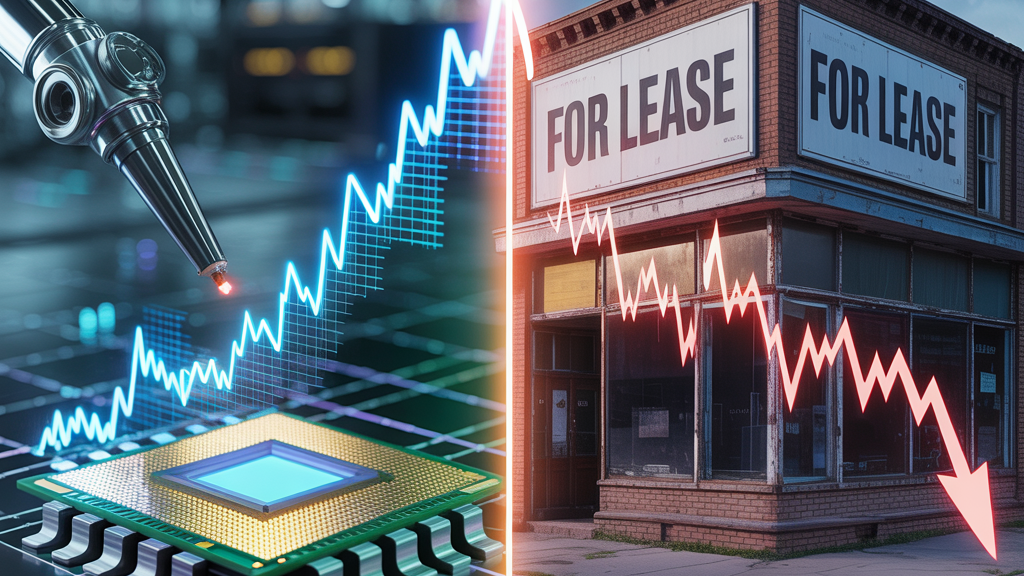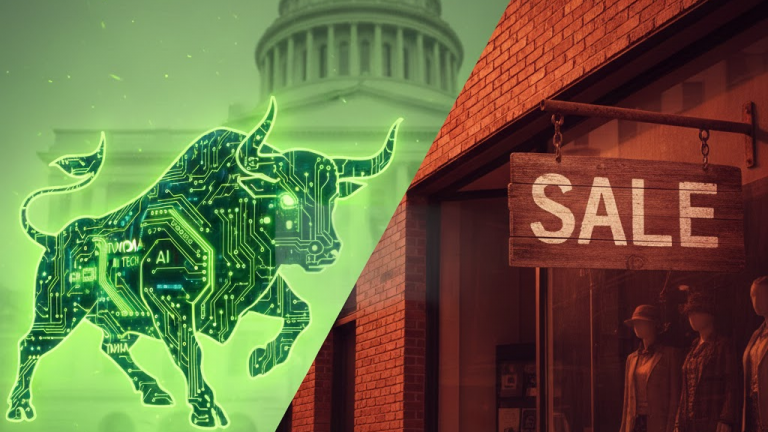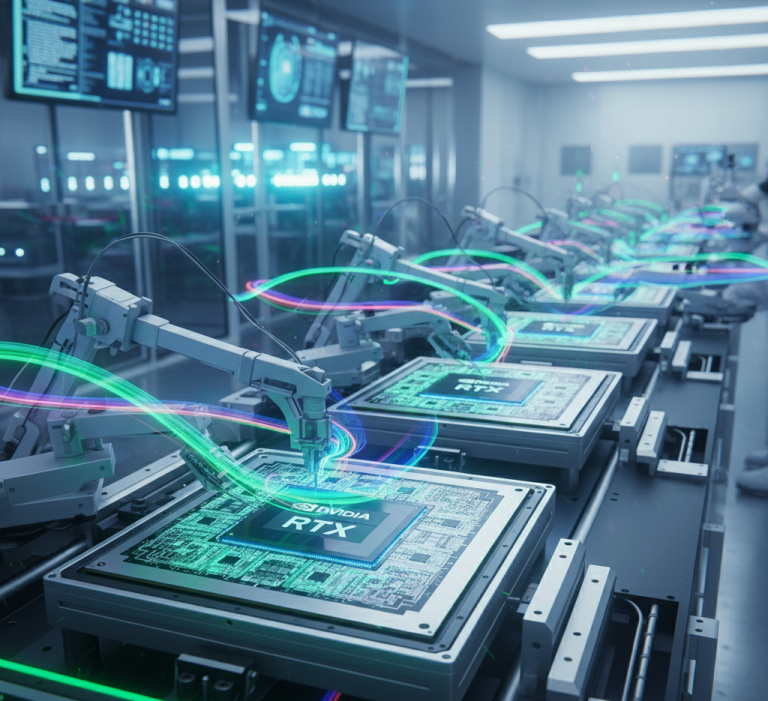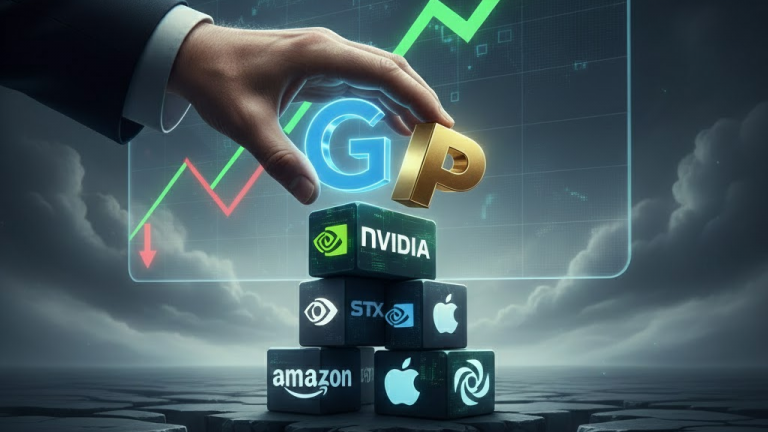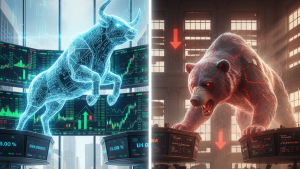Week Ahead: After a Week of Whiplash – All Eyes on the September Jobs Report
The week began with the AI story in full control. Driven by a potential $100 billion investment by Nvidia into OpenAI, the market’s tech darlings seemed unstoppable. The S&P 500, NASDAQ, and Dow all coasted to three consecutive all-time highs. This is Track 1: The “Future” Economy. It’s a world of massive corporate investment in the technological infrastructure of tomorrow. In this world, companies like Intel (INTC), a legacy chipmaker, can suddenly become the market’s top performer, soaring 20% on news of a potential $5 billion investment from Nvidia. This track is fueled by a belief in a long-term tech transformation so powerful that it feels immune to the normal economic cycle.
Then, on Tuesday, the market slammed into the wall of Track 2: The “Real” Economy. This track is driven not by corporate CAPEX budgets, but by the financial health of the average household. The first blow came from Fed Chair Jerome Powell, who punctured the market’s euphoria by simply describing stock valuations as “fairly highly valued.” His comment triggered a three-day sell-off as investors were reminded that the Fed’s fight against inflation isn’t over.
The knockout punch, however, came from CarMax (KMX). The used-car retailer, a bellwether for middle-class consumer health, plummeted over 23% after a disastrous earnings report. The company missed profit estimates by a staggering 37%, sending a shockwave through the consumer discretionary sector. This is the reality where higher interest rates and stubborn prices are pinching family budgets, forcing them to pull back on big-ticket purchases.
While the AI-fueled “future” economy was booming, the consumer-driven “real” economy was flashing red. The market spent the rest of the week trying to reconcile these two opposing truths. Strong GDP and jobs data suggested the economy was resilient, which paradoxically worried investors by giving the Fed less reason to cut interest rates.
It wasn’t until Friday, when a benign inflation report (the PCE Price Index) came in exactly as expected, that a fragile truce was called. The data suggested that maybe, just maybe, the economy could remain strong without reigniting inflation the coveted “soft landing.” This allowed the major indices to snap their losing streak and end the week nearly flat. But don’t be fooled by the quiet close; the underlying conflict is now more intense than ever.
What to Watch: The Moment of Truth for the Two-Track Economy (Bull Versus Bear Market)
The fragile truce between the AI bulls and the economic bears will be tested immediately. The week ahead is a moment of truth, and it all comes down to one number: the September Jobs Report, due out on Friday. This report will provide the clearest signal yet as to which economic track the booming future or the struggling present is winning.
Here is what both sides will be watching for, and the potential market reaction.

The Bull Case: hinges on the jobs report giving the “soft landing” narrative the green light. Bulls are hoping for a weak number, at or below the forecast of a meager 39,000 new jobs. Such a figure would provide definitive proof that the labor market is finally cooling, relieving pressure on wage growth and inflation. This would essentially give the Federal Reserve the all-clear signal it needs to proceed with interest rate cuts later this year. In this scenario, the market’s biggest macro fears would fade, bond yields would likely fall, and the AI-fueled growth stocks that have led the rally would receive a fresh tailwind to resume their climb.

The Bear Case: conversely, is that a surprisingly strong jobs report will force the Federal Reserve’s hand. If job creation significantly beats expectations, it would confirm the economy is still running too hot, reigniting fears of persistent inflation in the classic “good news is bad news” scenario. This would signal that the Fed’s work is not done and that interest rates must stay higher for longer. The outcome would shatter the market’s fragile truce, causing the odds of future rate cuts to evaporate and sending bond yields sharply higher. The high-flying tech stocks, whose lofty valuations depend on lower rates, would face a brutal repricing as the market is forced to confront the reality that the “real” economy’s strength will short-circuit the “future” economy’s rally.
This Friday, one of these narratives will gain the upper hand. The market is holding its breath, and investors should be prepared for the fireworks that will follow.
Disclaimer: This article is for informational purposes only and does not constitute financial, investment, or legal advice. The information provided is a synthesis of publicly available data and expert analysis and should not be considered a recommendation to buy or sell any security. Investing in the stock market involves risk, including the possible loss of principal. Past performance is not indicative of future results. Readers should consult with a qualified financial advisor to determine an investment strategy that is suitable for their own personal financial situation and risk tolerance.






